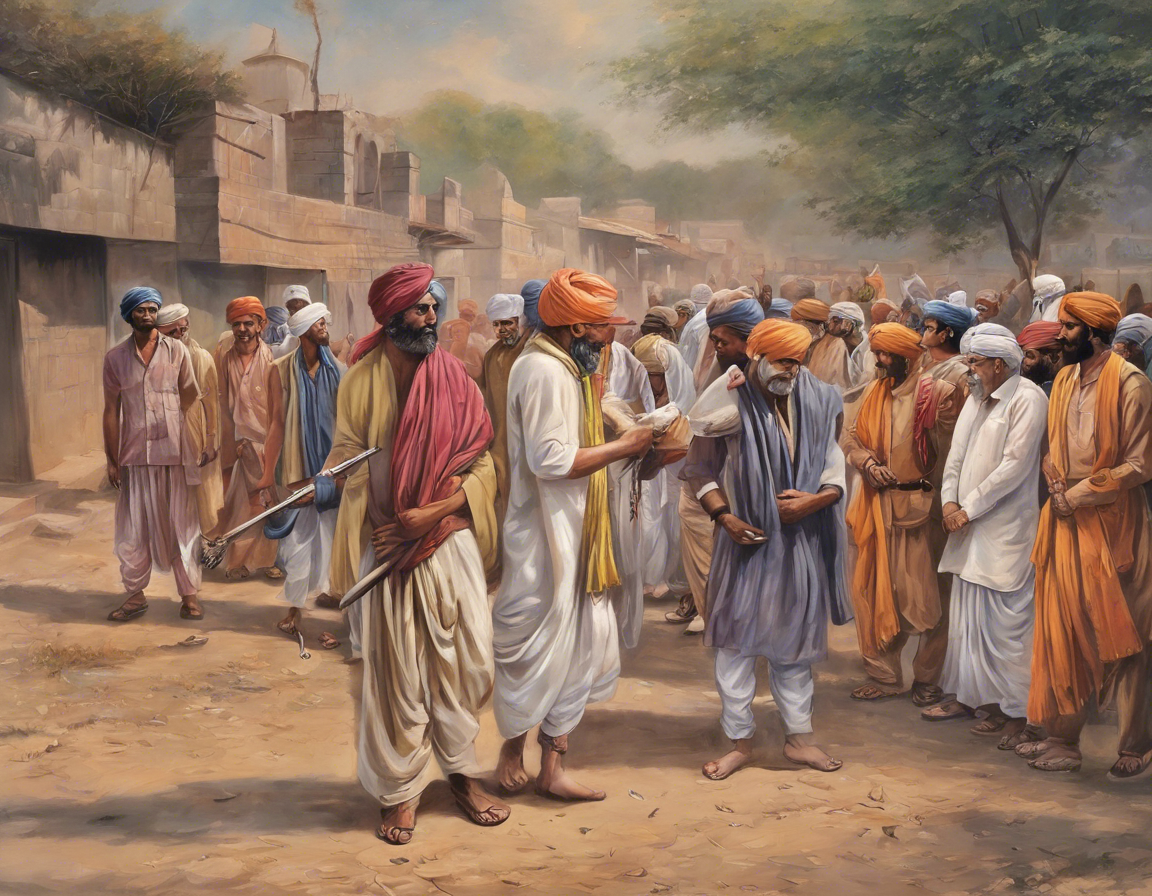Know When the Sawan Season Will End – Important Updates
Introduction
The Sawan season, also known as the monsoon season in South Asia, holds significant cultural and religious importance in the region. It marks the arrival of the rainy season, which is crucial for agriculture and overall water management. The month of Sawan is particularly revered by devotees of Lord Shiva, who observe various rituals and fasts during this time. While the rains bring relief from the scorching summer heat, they can also lead to challenges such as flooding and waterlogging in many areas.
Key Features of the Sawan Season
-
Cultural Significance: The Sawan month holds immense cultural and religious significance in Hinduism. It is believed to be an auspicious time for worship and devotion, particularly to Lord Shiva.
-
Rainfall Patterns: The Sawan season is characterized by heavy rainfall in many parts of South Asia. This precipitation is vital for replenishing water bodies and supporting agricultural activities.
-
Challenges: While the rains are generally welcomed, they can also bring challenges such as flooding, landslides, and waterborne diseases. Proper infrastructure and planning are essential to mitigate these risks.
-
Festivals and Celebrations: Various festivals and rituals are observed during the Sawan month, such as Shravan Somvar and Sawan Shivratri. These occasions hold religious significance and are marked by special prayers and offerings.
Monitoring the Sawan Season
-
Weather Forecasts: Keeping track of weather forecasts is crucial during the Sawan season to anticipate rainfall patterns and prepare accordingly.
-
Government Alerts: Governments often issue alerts and advisories during the monsoon season to warn citizens of potential dangers such as flooding or landslides.
-
Community Preparedness: Communities must also take proactive measures to prepare for the monsoon season, such as clearing drainage systems and ensuring the safety of vulnerable populations.
When Will the Sawan Season End?
The duration of the Sawan season varies each year, depending on factors such as monsoon onset and withdrawal. In general, the Sawan season starts in late June or early July and continues until September. The exact end date can fluctuate based on regional climatic conditions.
Factors Affecting the End of the Sawan Season
-
Monsoon Withdrawal: The retreat of the monsoon, also known as the northeast monsoon, signals the end of the Sawan season in many parts of South Asia.
-
Regional Variances: Different regions may experience the end of the monsoon season at slightly different times, depending on local weather patterns.
-
Meteorological Data: Meteorological data and historical climate patterns can help predict when the Sawan season is likely to end in a particular area.
Preparing for the End of the Sawan Season
-
Harvesting: Farmers must plan their harvests accordingly, taking into account the end of the monsoon season and potential disruptions to agricultural activities.
-
Infrastructure Maintenance: Local authorities should ensure that infrastructure such as roads, bridges, and drainage systems are well-maintained to withstand the challenges posed by the monsoon season.
-
Health Precautions: As the monsoon season comes to an end, it is essential to remain vigilant about waterborne diseases and other health risks that may arise due to stagnant water and poor sanitation.
FAQs (Frequently Asked Questions)
-
Q: Is the Sawan season the same as the monsoon season?
A: Yes, the Sawan season is synonymous with the monsoon season in South Asia, characterized by heavy rainfall and cultural significance. -
Q: What are some popular rituals observed during Sawan?
A: Devotees often observe fasts on Mondays (Shravan Somvar) and perform special prayers to Lord Shiva during the Sawan month. -
Q: How can communities prepare for the challenges of the monsoon season?
A: Communities can prepare by clearing drainage systems, ensuring emergency provisions, and staying informed about weather forecasts and government advisories. -
Q: When does the Sawan season typically end in South Asia?
A: The Sawan season usually ends in September, coinciding with the retreat of the monsoon and the onset of autumn. -
Q: What agricultural practices are common during the Sawan season?
A: Farmers often engage in sowing of crops, irrigation management, and pest control measures during the Sawan season to maximize harvests. -
Q: How can individuals stay safe during the monsoon season?
A: By avoiding waterlogged areas, practicing good hygiene, and following safety guidelines issued by local authorities, individuals can minimize risks associated with the monsoon season. -
Q: Are there any traditional foods associated with the Sawan season?
A: Some regions have culinary traditions of preparing specific foods during Sawan, such as dishes made from seasonal ingredients like millets and root vegetables. -
Q: What are the spiritual benefits of observing rituals during Sawan?
A: It is believed that observing rituals during Sawan can bring blessings, spiritual growth, and protection from negative influences, according to Hindu religious beliefs.
In conclusion, the Sawan season is a time of cultural, agricultural, and religious significance in South Asia. By understanding the key features of the season, monitoring weather patterns, and preparing for its end, communities can navigate the challenges and opportunities that the monsoon season presents. Increasing awareness, preparedness, and community resilience are essential for ensuring the well-being of individuals and the sustainability of livelihoods during this critical time of the year.

Post Comment